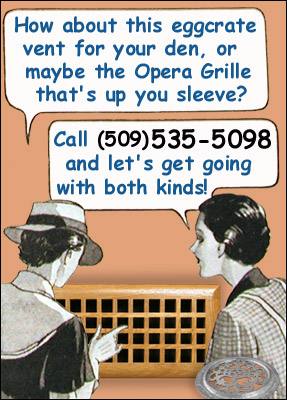baseboard registers
Baseboard registers are located where the wall and floor meet. Typically there is gap in between the left baseboard and the right and the baseboard register fits between them. Previously, the home builder probably installed the baseboard vent covers then initiated the installation of the baseboards and was able to get them to snugly fit right to the edge of baseboard register. Replacing the old baseboard register then becomes an issue of attempting to locate a unit that is not only visually desirable but also exactly the correct width to fit between the the existing baseboards without leaving an unsightly gap. Baseboard vent covers are unusual in that some styles are only available in an extremely minimal selection of sizes, while other styles can be fabricated in virtually any dimension you might need, although this means that you will not be able to have an airflow damper.
baseboard register measuring
The key measurement for a baseboard register is the distance from the left baseboard to the right. This measurement must be made as accurately as possible. Another important dimension to check is the distance from the floor to the top of the duct opening. With metal baseboard registers you'll want to get something slightly taller that that measurement. But with wood baseboard vent covers you'll want to get one that is about one inch higher than that measurement so that the top border (which is approximately one inch wide) does not adversly affect the airflow. This is especially important for return air grilles, and not so important for supply registers. While you are measuring, take a look at the floor and determine whether any portion of the floor is cut out. If so, you'll need to ask yourself how deep a baseboard register would need to be in order to cover up what needs to be covered. This is usually why baseboard vent covers have a sloping appearance.
baseboard vent covers
Depending upon the year built of the house you may find that baseboard vent covers have sheet metal behind them that is sticking out of the wall or floor. This may or may not cause difficulties. Metal baseboard registers are hollow behind and sometimes that sheet metal recess behind the faceplate successfully. But other times it becomes necessary to cut off some of the sheet metal, or maybe to fold it backwards so it does not project outward from the wall. With wood baseboard registers it is usually necessary that the metal is recessed behind the sheetrock or plaster in order to avoid install problems.






































